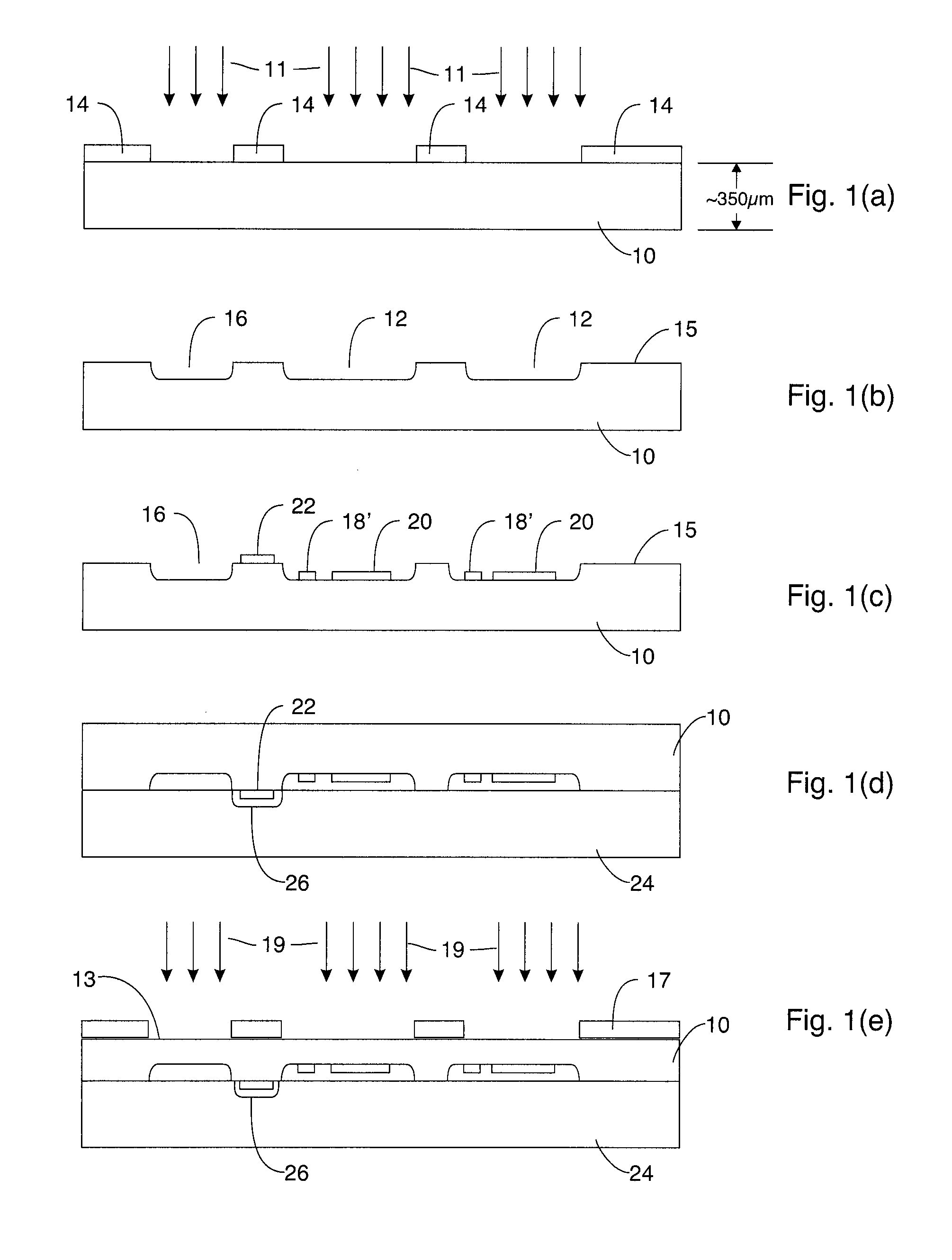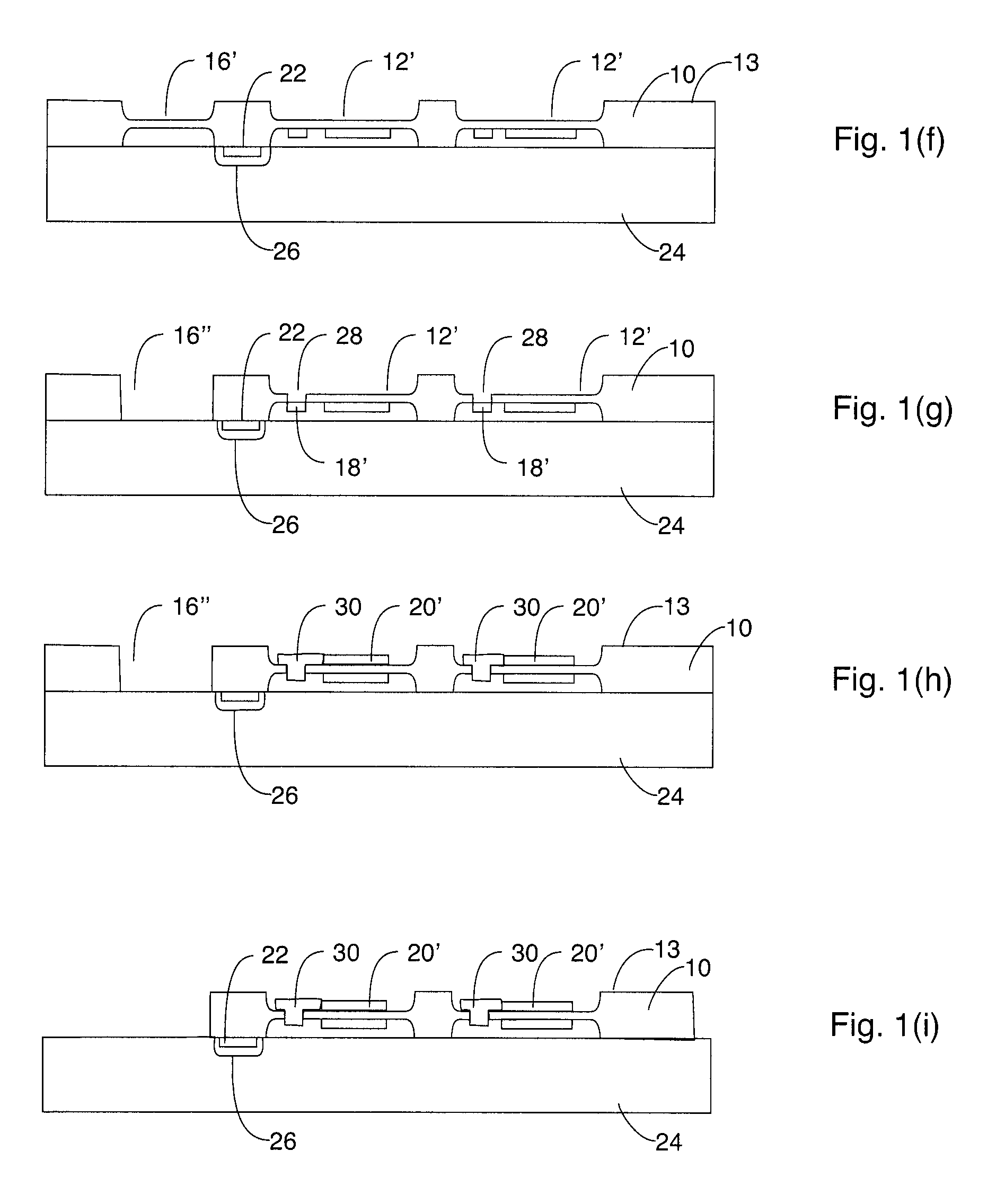Method of fabricating quartz resonators
a quartz resonator and resonator technology, applied in the direction of generator/motor, piezoelectric/electrostrictive transducer, transducer type, etc., can solve the problems of difficult alignment of tape and quartz resonator, inconvenient liquid isolation of porous resonator, operation variations, etc., and achieve greater sensitivity
- Summary
- Abstract
- Description
- Claims
- Application Information
AI Technical Summary
Benefits of technology
Problems solved by technology
Method used
Image
Examples
Embodiment Construction
[0017]FIGS. 1(a)-1(l) depict, in a series of side elevational views, steps which may be used to make the sensor described herein. These elevation views are taken along a section line 1-1 depicted in FIG. 2.
[0018]The formation of the disclosed sensor starts with a piezoelectric quartz wafer 10 preferably 3″˜4″ in diameter, AT-cut, with a thickness of preferably about 350 microns. As shown in FIG. 1(a), a mask 14 in combination with a dry plasma etch 11 (to prevent the formation of etch pits), are preferably used to form inverted mesas 12 (see FIG. 1(b)) etched in a top or first surface of wafer 10. Mask 14 is preferably formed of a thick resist or metal such as Ni or Al. In this connection, a solid layer of Ni or Al is may be put down and then a conventional photo-mask may be used to etch the Ni or Al in order to make mask 14 out of that metal. The preferred approach is to electroplate Ni onto a resist mold to form mask 14. This dry plasma etch 11 through mask 14 is optional, but is ...
PUM
| Property | Measurement | Unit |
|---|---|---|
| frequency | aaaaa | aaaaa |
| thick | aaaaa | aaaaa |
| frequency | aaaaa | aaaaa |
Abstract
Description
Claims
Application Information
 Login to View More
Login to View More - R&D
- Intellectual Property
- Life Sciences
- Materials
- Tech Scout
- Unparalleled Data Quality
- Higher Quality Content
- 60% Fewer Hallucinations
Browse by: Latest US Patents, China's latest patents, Technical Efficacy Thesaurus, Application Domain, Technology Topic, Popular Technical Reports.
© 2025 PatSnap. All rights reserved.Legal|Privacy policy|Modern Slavery Act Transparency Statement|Sitemap|About US| Contact US: help@patsnap.com



